Electric vehicles - introduction
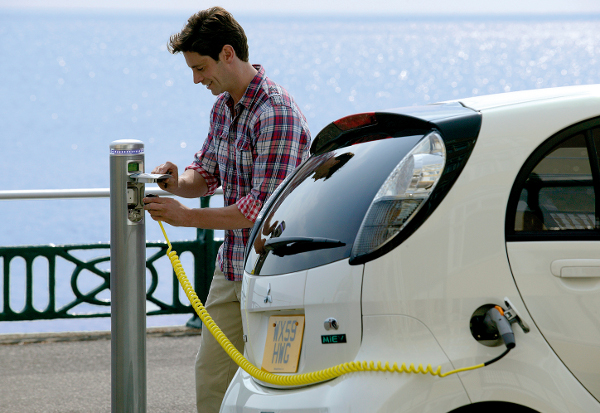
“EV charging can be an important source of flexible electricity demand to enable use of larger amounts of variable solar and wind energy on the grid.” – Lori Bird
[NB: We were very unsure whether to have this topic on the site (see this article). We don’t think it’s good to design society around the car – cars are enormously damaging to nature and communities, however they’re powered, and they enrich extractive, democracy-destroying corporations. The topic is here because EVs are less damaging than internal-combustion vehicles, which isn’t saying much.]
Contents
What are electric vehicles?
Electric vehicles (EVs) are run by electric motors powered by on-board rechargeable batteries, rather than by fossil fuels (in the vehicle, anyway – the electricity to charge the battery is still often generated in fossil-fuelled power stations) – although there are hybrid vehicles that use both. There are four basic types of EV:

Fully electric vehicles that only have a battery, and you can’t put fuel in; they’re charged from mains electricity at plug-in points.
Hybrids that can’t be plugged in – the battery is charged by the engine and by braking.
Plug-in hybrids that are charged from the mains and run on the battery until the charge runs out and the conventional engine takes over.
Extended-range electric vehicles that have a petrol generator on board that kicks in to top up the battery when required, but doesn’t drive the car – the drive is always electric.
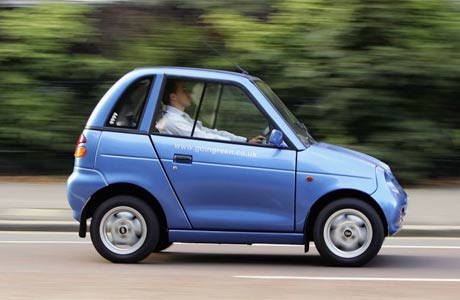
Another type of electric vehicle is powered by on-board fuel cells. These vehicles require a whole new hydrogen infrastructure rather than the existing National Grid.
History
EVs have been around since the late 19th century, and the classic EV in the UK in the 20th century was the milk float (as an aside, in the 1960s the UK probably had more EVs than the rest of the world put together, and they were almost all milk floats). The development of modern EVs began to take off in the 1990s with little quadricycle-type vehicles – the most popular being the G-Wiz. Since 2010, major manufacturers have been developing and safety testing fully electric cars, and now there’s a range of different models available. See here for more on the growth in market share of electric vehicles.

It won’t be possible to buy a new petrol or diesel car for much longer. The future of motoring is electric. The reason it’s taken so long is that the development of the EV was deliberately suppressed by large corporations, especially (obviously) oil companies.
EVs are typically automatic, and the standard mode is ‘eco’, which is fine – unless you want to change to a more ‘sporty’ mode that drains the battery more quickly.
A new generation of lithium-ion batteries are being developed for EVs that are smaller, lighter and more powerful than lead-acid batteries.
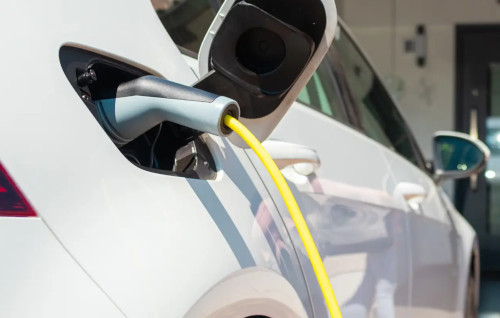
What are the benefits of electric vehicles?
First, see the paragraph in brackets at the top of this article, and bear in mind that the following benefits are in comparison with vehicles powered by internal combustion engines.
Environmental benefits
- EVs are far more energy-efficient than traditional internal combustion vehicles.
- Although EVs produce more CO2 in their manufacture, studies (like this one) show that for the whole of the vehicle’s life-cycle (i.e. manufacture plus use), CO2 emissions will be 20% lower for an EV, even if charged with electricity from coal/gas-fired power stations.

- However, the real benefits of EVs will be realised in future, if and when more green electricity comes online, and lithium-ion batteries become lighter and more efficient.
- The mining of the raw materials for lithium-ion batteries causes environmental problems, but the overall impact is lower compared to lead-acid or nickel-cadmium batteries because they’re much lighter, and so use fewer resources per unit of output, and they don’t contain extremely toxic cadmium.
- No motor oil required.
Other benefits
- Cheaper to run per mile travelled compared to petrol or diesel, depending on efficiency.
- No congestion charge, free parking sometimes – depending on the local authority, reduced resident zone parking fees.
- Improves the driving experience – EVs are silent, which can reduce stress.
- Less maintenance – no changing parts like filters, plugs etc. and no checking water or oil levels.
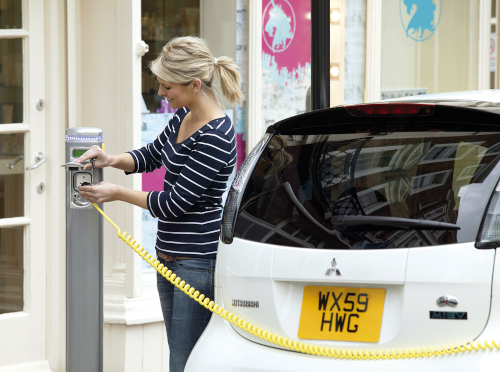
- No emissions or noise from the vehicle when running on battery, which means cleaner air and a quieter environment in urban areas.
Downsides to electric vehicles include the fact that they’re more expensive (see below), but as with most things, prices will fall as uptake increases; and secondly, the market is controlled by the corporate, growth-oriented world – something that we believe is inherently unsustainable (and undemocratic). At least the energy for EVs can potentially be generated locally from renewable sources, and doesn’t have to be in the hands of giant oil companies. There are even books on how to build your own EV (see further resources), and so maybe manufacture can become more local and small-scale in future.
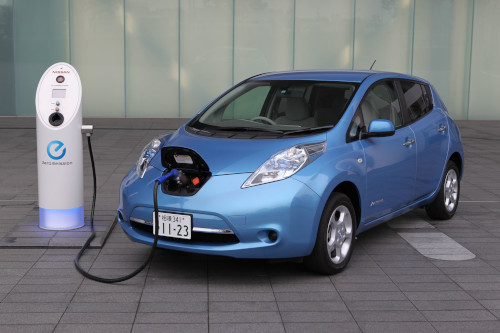
What can I do?
First, give up / share your car if you can. If you can’t, then make your current vehicle last as long as you can. Then, if you decide to go electric:
Getting an electric vehicle
It’s difficult to provide reliable up-to-date information here on prices, legislation etc., as things are changing so fast. See Zapmap for latest news, advice and to compare the specs, prices and environmental impact of different models. You can get electric motorbikes, bikes and scooters too.
There are government grants for electric cars or plug-in hybrids – the dealer / manufacturer will have the forms. Electric vehicles are not cheap. This is a new market, and so no-one knows for sure what will happen to prices, including batteries, as materials might become more or less available due to resource depletion, war, legislation or new technology. The EV market is changing fast. Do your research on prices (including electricity prices), whether or not EVs are subject to road tax, charging points etc.

Charging
The number of charging points is rising rapidly. See Zapmap to find charging points in the UK. Most people will charge at home or at work though – you can use a charging unit with a standard 3-pin plug, or get a dedicated home charger. The government offers grants for home-charging units. Workplace charging is sometimes free, depending on the employer. For home charging you’ll need off-street parking – you can’t trail cables across the pavement. Slow/standard charging takes 8-10 hours, and can be done overnight (cheaper); fast charging takes 3-4 hours, and rapid charging can give an 80% charge in 20-30 minutes.
Range
‘Range anxiety’ may be a factor when considering an EV. A couple of decades ago, an electric vehicle might have been expected to have a range (the distance travelled between charges) of 20-30 miles. Now 200-300 miles. The average driver in the UK covers 60-70 miles per day, so we can expect range anxiety to wane a little.
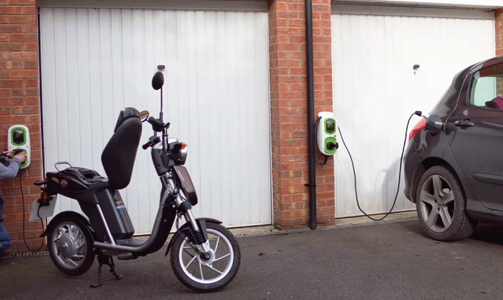
Further resources
EVs
- Zapmap: latest stats, and maps of charging points
- Government grants
- List of available EV models
- Build your own electric car
Reducing car use
- 12 best ways to get cars out of cities
- Steering away from a car-centric society
- More articles on low-impact transport
Specialist(s)
Thanks to Melanie Shufflebotham of Zapmap for information.


